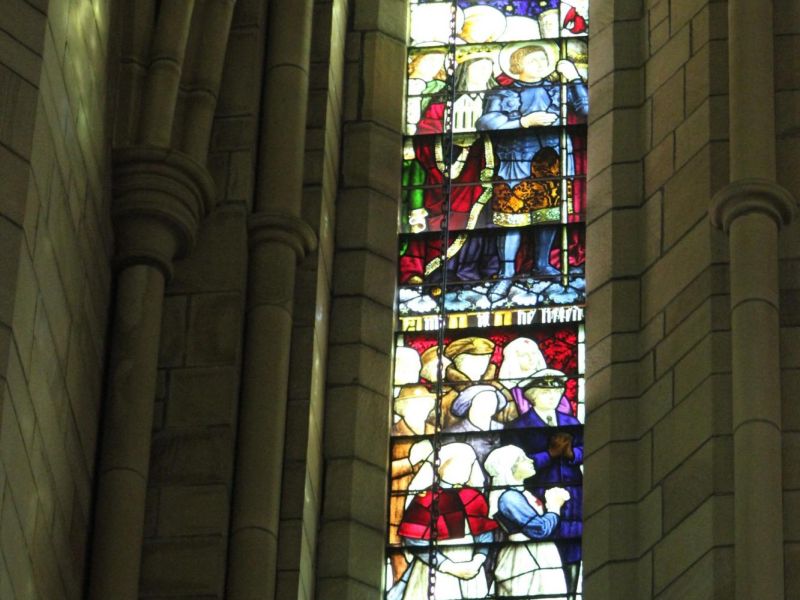Commemorating the Service and Sacrifice of all Australians who Fought in the First World War
St John's Cathedral has long enjoyed close associations with Australian Service men and women, and this association was especially strong during and after the First World War.
The Cathedral was one of the first institutions to commemorate the dawn landings at Gallipoli, conducting a requiem eucharist for the "Fallen" a mere 46 days after the landings. During the War, some 22 clergy from the Brisbane Anglican Diocese served as chaplains in the First AIF. They included Canon David Garland of the Cathedral, renowned for his work in supporting the welfare of soldiers both in Queensland and the Middle East and who is regarded as one of the principal architects of Anzac Day.
After the War, the Cathedral became a repository for a range of memorials to Service men and women who have served overseas.
One of the earliest memorials are three stained-glass windows commissioned in 1922 to commemorate the service of all Australians who had taken part in the War, not only those who had fought at Gallipoli but also in the Middle East and the Western Front.
The windows were crafted in England by the distinguished glass-making firm of Burlinson and Grylls. They are grouped under the theme of "Service and Sacrifice". The central window illustrates Christ's supreme sacrifice on the Cross. On either side are two windows which show various soldiers from historic epochs looking towards the Saviour. At the bottom of each window is a group of Australian and British service personnel in their First World War uniforms, with the front figures kneeling in prayer.
One of the notable features of the windows is the special place given to women, in particular nurses, who had served in the War: in the windows they appear on equal footing to the men. The early 20th Century was an age when women had lower status than men, having few of the opportunities for advancement that they have today. But in giving prominence to women, the Cathedral authorities were reflecting the enormous contribution that women had made during the War in the support of enlisted men.
During the War more than 3000 Australian nurses volunteered for service. They worked in military hospitals, on hospital ships and trains, or in casualty clearing stations close to the front line. One of their first tasks was to care for the many wounded soldiers from Gallipoli. This they did from the nearby Greek island of Lemnos and from centres in Egypt.
Throughout the First World War, Australian nurses worked tirelessly around the clock, confronting horrific injuries, disease, poor facilities and food, overcrowding, inadequate supplies and death. Trench foot and gangrene were common among the soldiers, as were amputations, leaving many crippled for life. Many troops, particularly on the Western Front, also suffered from severe psychological injury, then called "shell-shock", or "battle fatigue", now known as "post traumatic stress disorder" (PTSD). The disorder was brought on by constant bombardment, fear and the miserable conditions of trench warfare, a notorious feature of battle on the Western Front.
- Taken from "St John's Cathedral and the Anzac Legend" by Denzil Scrivens Publis… https://www.stjohnscathedral.com.au/discover-st-johns/
 Denzil Scrivens
Denzil Scrivens